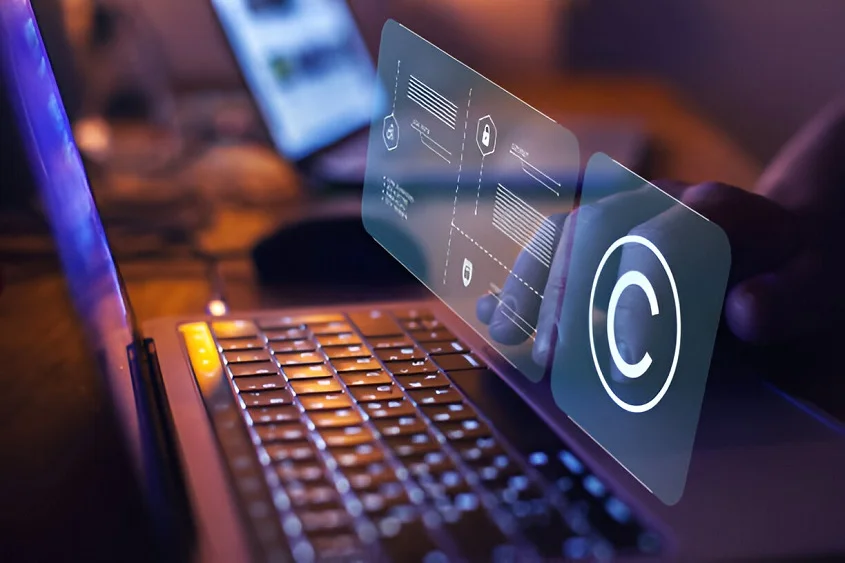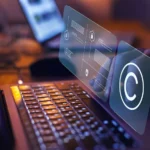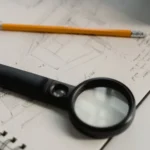Notice of Allowance in Patent Applications: What to Expect and Next Steps
- Updated on: Jan 11, 2025
- Read 11 minutes
- Published on Jan 11, 2025
What is a Notice of Allowance?
A Notice of Allowance is an official communication from a patent office that indicates the patent application has been examined and found to be allowable. It is a significant milestone in the patent prosecution process, as it means that the patent office has determined that the invention meets the statutory requirements for patentability. The Notice of Allowance typically includes the allowed claims, which define the scope of protection granted by the patent, as well as any necessary fees that must be paid to proceed with the issuance of the patent. Upon receiving a Notice of Allowance, the applicant has a limited time period to pay the required fees and complete the necessary paperwork to finalize the patent grant. It is important for applicants to carefully review the allowed claims and ensure they accurately reflect the scope of their invention before proceeding with the issuance process. Once the fees are paid and all requirements are met, the patent will be granted and the applicant will receive a patent certificate.
Purpose of a Notice of Allowance
A Notice of Allowance is an official communication from a patent examiner to the applicant, indicating that the examiner has reviewed the patent application and has determined that the claims meet the requirements for patentability. It is an important milestone in the patent application process, as it signifies that the applicant is one step closer to obtaining a granted patent. The purpose of a Notice of Allowance is to inform the applicant that their application has been examined and found to be allowable, and to provide instructions on the next steps to be taken in order to complete the patenting process. Upon receiving a Notice of Allowance, the applicant must pay the issue fee and file any necessary formalities, such as an oath or declaration, within a specified time period. Failure to comply with these requirements may result in the application being abandoned. Once all the necessary fees and formalities have been submitted, the patent will be granted and the applicant will receive a patent grant document.
Importance of a Notice of Allowance
A Notice of Allowance is a crucial milestone in the patent application process. It signifies that the patent examiner has reviewed the application and determined that the invention is eligible for a patent. This notification is a positive indication that the invention meets the requirements for patentability, including novelty, non-obviousness, and usefulness.
The Notice of Allowance provides the applicant with the assurance that their invention will be granted a patent. It is a significant step towards obtaining exclusive rights to the invention and protecting it from unauthorized use.
Once it is received, the applicant must take certain next steps to complete the patent application process. These steps may include paying the issue fee, filing the necessary paperwork, and responding to any outstanding requirements or objections from the patent examiner.
Contents of a Notice of Allowance
Granting of Patent Rights
Once a patent application is found to meet all the requirements and is deemed patentable, the patent office issues a Notice of Allowance. This notice serves as an official communication to the applicant that their application has been approved for granting of patent rights. The Notice of Allowance typically includes important information such as the patent number, issue date, and the fees required for finalizing the patent grant.
After receiving the Notice of Allowance, the applicant must complete the necessary formalities and pay the required fees within a specified time period. These formalities may include submitting an executed oath or declaration, paying the issue fee, and providing any additional documentation requested by the patent office.
Once the formalities are completed and the fees are paid, the patent office proceeds with the final processing of the application. This involves preparing the patent grant document, which includes the patent claims, description, and drawings. The patent grant document is then issued to the applicant, officially granting them the exclusive rights to their invention.
It is important for applicants to carefully review the patent grant document to ensure that all the details are accurate. Any errors or discrepancies should be promptly brought to the attention of the patent office for correction.
Next Steps: After the granting of patent rights, the patent holder can enforce their rights against infringers and may choose to license or sell their patent. It is also important to note that the granting of patent rights does not guarantee protection in all countries. To obtain patent protection in other countries, the applicant must file separate patent applications in each desired country or utilize international patent treaties such as the Patent Cooperation Treaty (PCT).
Claims Allowed
After a thorough examination of the patent application, the patent examiner may determine that certain claims meet the requirements for patentability and are therefore allowed. This means that the claims have been found to be novel, non-obvious, and useful. The examiner will issue a Notice of Allowance, which is a formal notification that the claims have been allowed.
Once the claims are allowed, the applicant has a limited time period to pay the issue fee and any additional fees required by the patent office. The issue fee is the final fee that needs to be paid before the patent can be granted.
After the issue fee is paid, the patent office will issue the patent and publish it. The patent will then be enforceable, and the applicant will have exclusive rights to the invention described in the patent claims.
It is important to note that even after the claims are allowed, the patent may still be subject to post-grant proceedings, such as opposition or re-examination. These proceedings allow third parties to challenge the validity of the patent claims.
Fees and Formalities
When it comes to the Notice of Allowance in patent applications, there are certain fees and formalities that need to be taken care of. Filing fees are required to be paid upon receiving the Notice of Allowance. These fees cover the cost of processing and examining the patent application. Additionally, there may be other formalities that need to be completed, such as submitting an issue fee and oath or declaration. The issue fee is a final fee that is required to be paid before the patent is granted. The oath or declaration is a legal document that confirms the inventorship of the invention and is usually required to be filed within a certain timeframe after receiving the Notice of Allowance. It is important to carefully review the fees and formalities associated with the Notice of Allowance to ensure a smooth and timely patent prosecution process.
Next Steps After Receiving a Notice of Allowance
Payment of Issue Fee
Once a Notice of Allowance is received, the next step in the patent application process is the payment of the Issue Fee. The Issue Fee is a fee that must be paid to the patent office in order to proceed with the issuance of the patent. The amount of the Issue Fee varies depending on the type of patent and the entity status of the applicant. For example, the Issue Fee for a small entity may be lower than the Issue Fee for a large entity. It is important to note that the Issue Fee must be paid within a specific time frame, typically within 3 months from the date of the Notice of Allowance. Failure to pay the Issue Fee within the specified time frame may result in the abandonment of the patent application. Once the Issue Fee is paid, the patent office will proceed with the issuance of the patent and the patent will be granted to the applicant.
Preparation of Formal Drawings
The preparation of formal drawings is an important step in the patent application process. Formal drawings are required for most patent applications and are used to illustrate the invention in a clear and precise manner. These drawings must comply with specific requirements set by the patent office, including size, margins, and labeling. It is crucial to ensure that the drawings accurately depict the invention and provide all the necessary details. Professional draftsmen or patent illustrators are often hired to create the formal drawings, as they have the expertise and knowledge of the patent office guidelines. The drawings should be created using appropriate software or tools to ensure high-quality and accurate representations. Once the formal drawings are prepared, they are typically submitted along with the patent application to the patent office. It is essential to review the drawings thoroughly before submission to avoid any errors or inconsistencies that may affect the patent application’s validity. Overall, the preparation of formal drawings is a critical aspect of the patent application process and requires attention to detail and adherence to the patent office guidelines.
Submission of Final Documents
Once a Notice of Allowance is received, the patent applicant must submit the final set of documents to the patent office. These documents include Formal Drawings, Abstract, Specification, and Claims. The Formal Drawings provide visual representations of the invention, while the Abstract provides a concise summary of the invention. The Specification describes the invention in detail, including its structure, function, and use. The Claims define the scope of the invention and outline the specific elements or steps that make the invention unique. It is important to carefully review and double-check these documents to ensure accuracy and completeness. Any errors or omissions may result in delays or even rejection of the patent application. Once the final documents are submitted, the patent office will review them to ensure compliance with all formal requirements. If everything is in order, the patent will be granted, and the applicant will receive the patent grant certificate.
Finalizing the Patent Application
Once the Notice of Allowance is received, the patent application is one step closer to being granted. However, there are still important steps to be taken to finalize the patent application before it becomes an issued patent.
1. Pay the Issue Fee: After receiving the Notice of Allowance, the applicant must pay the issue fee within the specified time period. The issue fee is the final fee required to be paid before the patent is granted.
2. Review the Allowed Claims: The applicant should carefully review the allowed claims in the Notice of Allowance. It is important to ensure that the allowed claims accurately cover the invention and provide sufficient protection.
3. Prepare the Final Application Documents: The applicant must prepare the final application documents, including any amendments or corrections required by the examiner. These documents will be used to generate the issued patent.
4. Submit the Final Application Documents: Once the final application documents are prepared, they must be submitted to the patent office. The documents will be reviewed by the examiner to ensure compliance with the requirements.
5. Await the Issued Patent: After submitting the final application documents, the applicant must wait for the patent office to generate the issued patent. This process may take several weeks or months, depending on the workload of the patent office.
Once the patent is issued, the applicant will receive the official patent document and can begin enforcing their rights as a patent holder.
Moving Forward with Patent Protection
Once a Notice of Allowance is received, it is an exciting milestone in the patent application process. It means that the patent examiner has reviewed the application and determined that it meets the requirements for patentability. However, it is important to note that the Notice of Allowance does not automatically grant the patent. There are still several steps that need to be taken to secure patent protection.
1. Paying the Issue Fee: After receiving the Notice of Allowance, the applicant is required to pay the issue fee within a specified time period. This fee is necessary to cover the costs associated with issuing the patent.
2. Finalizing the Claims: Before the patent can be granted, the applicant must finalize the claims. This involves carefully reviewing the claims and making any necessary amendments or corrections.
3. Formalities Review: Once the issue fee is paid and the claims are finalized, the patent application undergoes a formalities review. This review ensures that all necessary documents and forms have been properly submitted.
4. Granting the Patent: If the formalities review is successful, the patent will be granted. The applicant will receive a Notice of Patent Grant, which officially confirms the grant of the patent.
Once the patent is granted, the applicant can begin enforcing their patent rights and taking legal action against any infringers. It is important to note that the patent protection is limited to the claims that are granted, so it is crucial to have well-drafted and comprehensive claims.
Moving forward with patent protection requires careful attention to detail and adherence to the necessary procedures. It is advisable to seek the guidance of a qualified patent attorney to navigate through the remaining steps and ensure the best possible outcome for your patent.
Celebrating the Notice of Allowance
Receiving a Notice of Allowance is a significant milestone in the patent application process. It is an official communication from the patent office indicating that the application has been reviewed and found to meet the requirements for patentability. This notice is a cause for celebration as it signifies that the invention is one step closer to being granted a patent.
Once a Notice of Allowance is received, it is important to carefully review the document and understand the terms and conditions associated with it. This includes paying the required issue fee and submitting any necessary documents or amendments within the specified time frame.
Next Steps after receiving a Notice of Allowance may include:
- Payment of Issue Fee: The issue fee must be paid within a specific period to proceed with the patent grant process. Failure to pay the fee in time may result in abandonment of the application.
- Document Submission: Any required documents, such as an executed oath or declaration, may need to be submitted to the patent office.
- Amendments: If any amendments are required to the claims or specifications, they must be submitted within the specified time frame.
After completing these steps, the patent office will review the documents and make a final determination on the grant of the patent. It is important to carefully follow the instructions provided in the Notice of Allowance to ensure a smooth and successful patent grant process.










No comment yet, add your voice below!